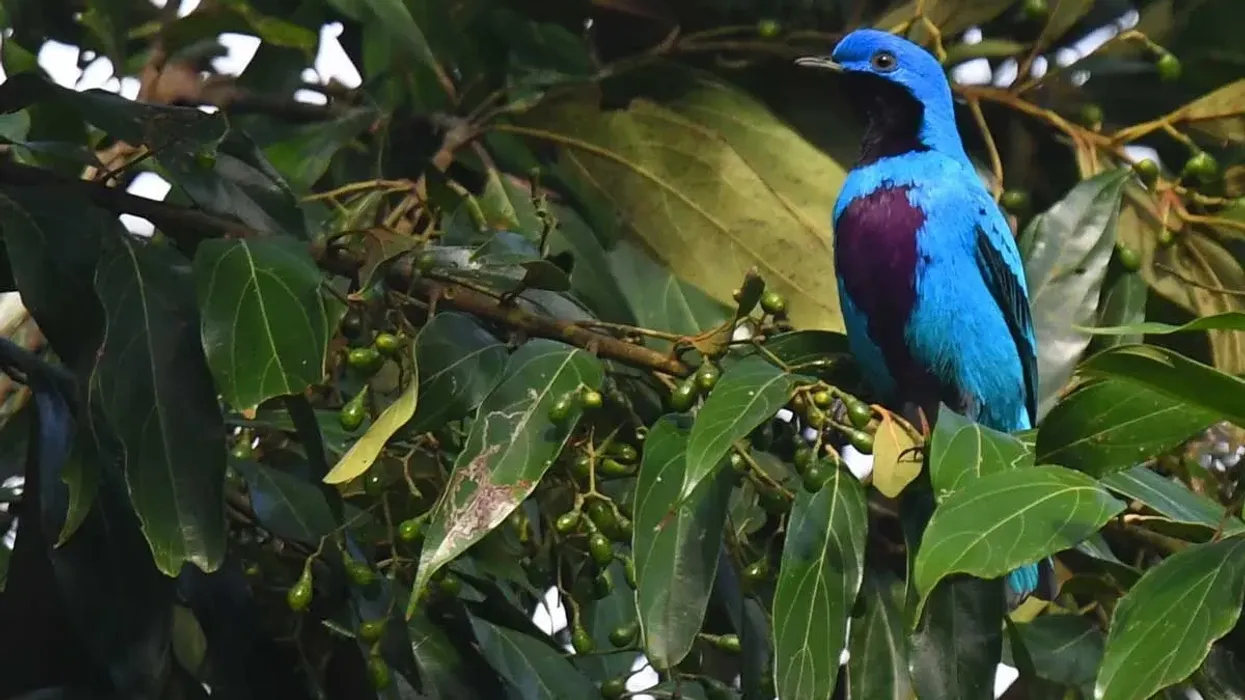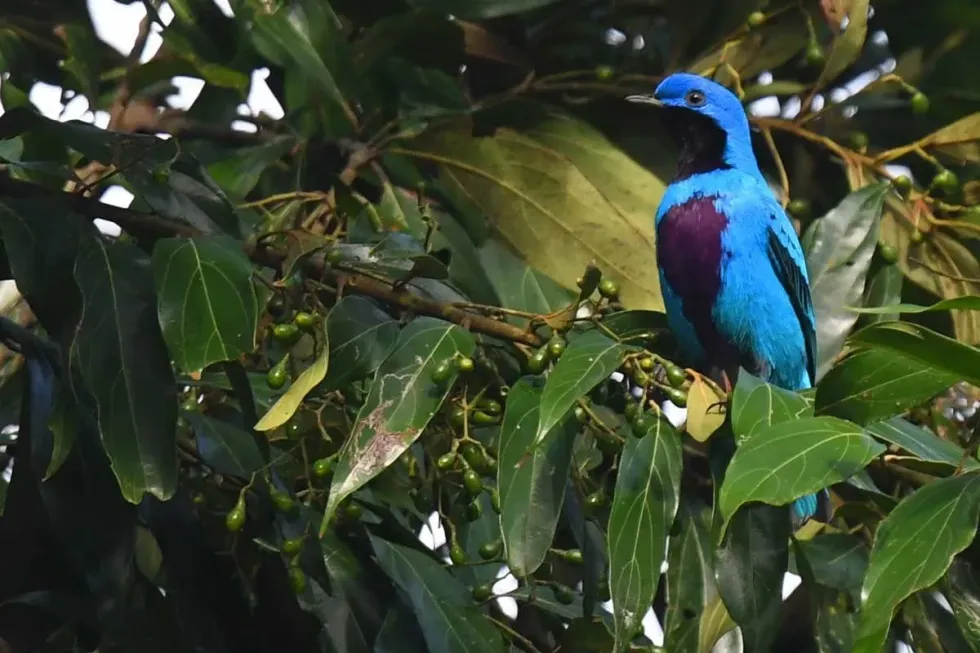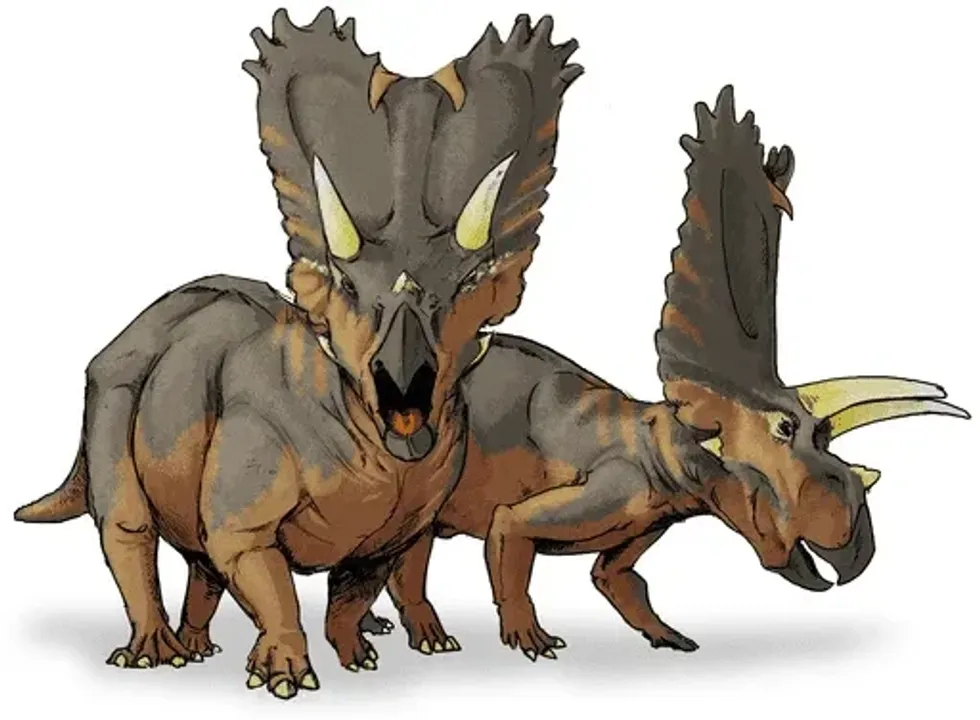The lovely cotinga, also known by the name Cotinga amabilis, is a species of bird native to and living in parts of North America and Central America in wet forests, canopies, and tropical moist lowland. These birds reside in the tropical heavily degraded former forests and are bright-colored small to medium-sized birds.
There are a total of 66 species names divided into 25 genera. Lovely cotinga belongs to the same family of species and belongs to the order Passeriformes and genus Cotinga.
Males are brightly colored as compared to females and are extremely vibrant and bright. They are also called perching birds and are active throughout the day and rest at night.
Some species of this family are restricted by region while others are seen in multiple regions also some Cotinga amabilis, or lovely cotingas, are migratory while others are not. They are non-territorial and coexist with other species in the wild. This article will take a look at some fun and interesting facts about the Lovely cotinga.
For more relatable content, check out these hummingbird facts and bee-eater facts articles as well.
Lovely Cotinga Interesting Facts
What type of animal is a lovely cotinga?
Lovely cotinga (cotinga amabilis) is a type of animal that belongs to the kingdom Animalia and order Passeriformes and genus Cotinga.
What class of animal does a lovely cotinga belong to?
Lovely cotinga or cotinga amabilis is a type of bird that belongs to the class Aves, family Cotingidae, and genus cotinga and order Passeriformes.
How many lovely cotingas are there in the world?
Lovely cotingas or cotinga amabilis exact population in the world is not evaluated. Other species from the same family include andean-cock-of-the-rock and Amazonian umbrella bird who also are found in forests. Habitat destruction is a major threat to these species.
Where does a lovely cotinga live?
Cotinga amabilis live in the range heavily degraded former forest, tropical moist lowland and canopy regions in Central America and North America. They may also be found in Mexico, Costa Rica, and Panama.
What is a lovely cotinga's habitat?
The range of lovely cotinga range in tropical forests, canopy regions, and other similar habitats. They are usually spotted sitting on branches however rarely seen. They are widespread birds however its rare to spot them easily although their distribution is simple. They are seen in regions including Costa Rica, Mexico, Panama, and other nearby locations.
Who do lovely cotingas live with?
Lovely cotingas are solitary birds. They are not innately territorial beings and coexist with other species in the wild.
How long does a lovely cotinga live?
Their exact lifespan has not been evaluated. The cotinga bird's lifespan is dependant on its diet, habitat, and other factors including predators.
How do they reproduce?
Cotinga amabilis are polygynous birds and may mate more than once a year. Males engage in courtship displays and compete with other male species of their own kind. Males are brightly colored and use it to attract possible mates.
Males may or may not assist the female in building nests using twigs and other material which supports and keeps the nest together. Post mating the female lays one to four eggs.
Incubation lasts a few days and largely depends on the development of the young. Smaller species of birds develop faster. The chicks are born blind and birth and featherless and rely on their parents for all their needs including food and shelter.
What is their conservation status?
Cotinga amabilis conservation status is classified as of Least Concern by the International Union For Conservation Of Nature (IUCN).
Lovely Cotinga Fun Facts
What do lovely cotingas look like?

Cotinga amabilis description constitutes that they are compact birds that are brilliant bright blue colored and instantly catch the eye when seen. They have a plum-colored throat and belly patch.
Their wing and tail feathers are black with unique blue-greenish margins. They have dark black eyes as well and a small black region below their neck. They are a cotinga genus species and belong to the family Cotingidae.
They have a hook-tipped bill and large heads. Females are relatively smaller in size as compared to male species. This is primarily due to sexual dimorphism.
They are common in size as compared to various other related and nonrelated species of bird who are medium-sized. Spangled cotingas and blue cotingas (cotinga nattererii) are related to lovely cotingas.
How cute are they?
The lovely blue cotinga is a cute species of bird that looks extremely beautiful although it is fairly uncommon to see it. Cotinga amabilis are known by their popular nickname as perching birds.
How do they communicate?
Amabilis is a species that have strong vocal muscles and are efficient communicators. They communicate using calls as well as body language. Courtship displays are a common scene when mating season begins while at other times they communicate using tuneful yet far-reaching calls.
How big is a lovely cotinga?
Lovely cotinga is 7 in (19 cm) tall which is two times bigger than the ovenbird which is 4.3- 6.3 in ( 11- 16 cm).
How fast can a lovely cotinga fly?
Lovely cotingas can fly at relatively good speeds as compared to other species of birds. Cotinga amabilis are mostly non-migratory hence they fly at relatively good speeds.
How much does a lovely cotinga weigh?
Lovely cotinga weighs 0.158 lb (72 g). Cotinga amabilis' weight is relatively low as compared to various species from the same family.
What are the male and female names of the species?
Male and female names are not different. Females tend to be smaller as compared to males this is due to sexual dimorphism.
What would you call a baby lovely cotinga?
Baby lovely cotinga is referred to as a fry similar to the name of other species of birds. Cotinga amabilis is completely dependant on its parents.
What do they eat?
Cotinga amabilis is a species that feeds mostly on berries and other fruits. They also feed on insects like black carpenter ants and others on rare occasions. They feed while on branches. They are also good at seed dispersal.
Are they poisonous?
No, these species are not poisonous. Cotinga amabilis is a species that is rarely seen and when you do spot them they instantly catch the eye with their beautiful feathers.
Would they make a good pet?
No, these are innately wild birds and thrive best in their natural habitat. The lovely cotinga bird is usually seen residing in heavily degraded former forest regions.
Atlantic canaries are the most inexpensive and popular species of pet bird which you could consider if you wish to adopt a bird as a pet. Another popular bird pet species is the parakeet.
Did you know...
There are a total of 10,000 species of birds. This includes migrating and non-migrating birds as well. Lovely cotinga specimen is one unique set from the same list. Lovely cotingas are not migratory birds.
Birds don't have teeth. They have beaks instead which they use to pick on food that they eat.
Ostriches have the largest eyes in the bird species and it is also known as the largest bird species.
Domestic birds including names like parrots, crows, and ravens are bird species that mimic humans. However, wild species of the same family cannot mimic humans.
What are lovely cotingas known for?
Lovely cotingas have beautiful feathers which are uses by Amazonian tribes and others as ornaments hence they hold great cultural value as well. In certain tribes, they were also consumed as meat as an additional protein source.
Species like cock of the rock were threatened at one point in time due to such exploitative practices. Cotinga amabilis is also seed dispersers and feeds on berries, fruits, and insects as well.
How did the lovely cotinga get its name?
Cotinga refers to birds found in Central and North America. Lovely cotingas are brightly colored birds. Cotinga is a bird species that is common to bird species that belong to Cotingidae.
Lovely cotingas are passerine birds. The bird species in this family are extremely diverse and unique birds.
Male species are generally brightly colored as compared to female species primarily due to sexual dimorphism this is seen in other species like peacocks and other birds as well. Have you ever come across any species of cotinga birds? If you have not you could try your chance by visiting any conservation forest or other bird sanctuaries.
Here at Kidadl, we have carefully created lots of interesting family-friendly animal facts for everyone to discover! Learn more about some other birds including palm warbler facts and western-kingbird facts.
You can even occupy yourself at home by coloring in one of our free printable Cotinga coloring pages.









